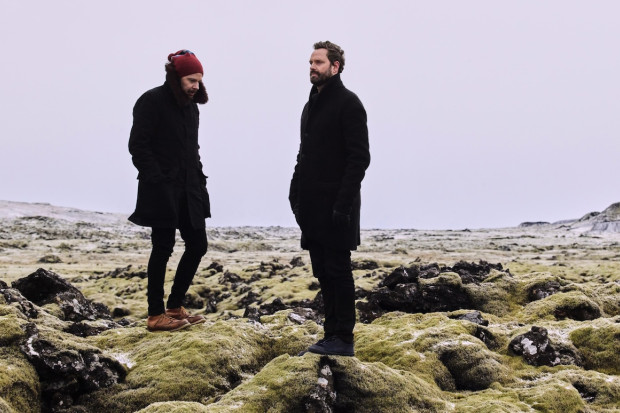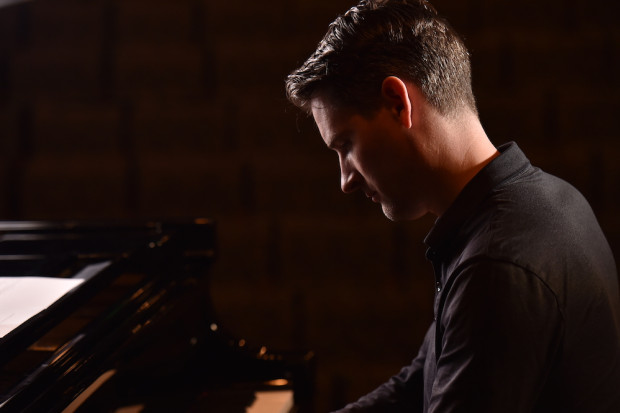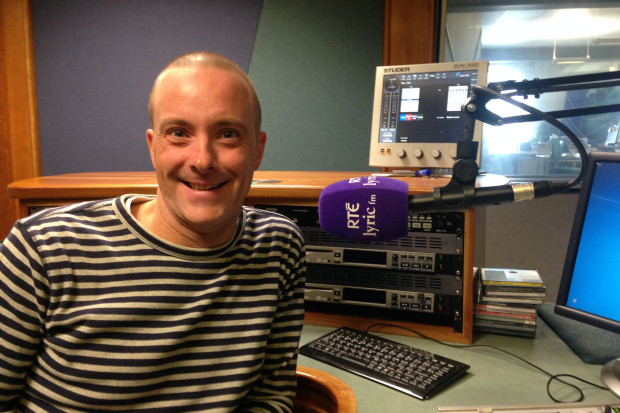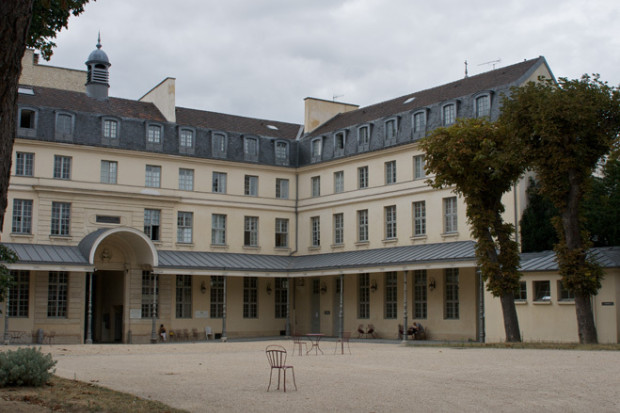Sketches of Spain
Trio Arbos: Miguel Borrego (violin), José Miguel Gómez (cello), Juan Carlos Garvayo (piano); Alda Caiello (soprano); Dermot Dunne (accordion); Graham Anthony Devine (guitar); Krassimir Sterev (accordion).
The Model Arts and Niland Gallery, Sligo, 13–15 April 2007
As I sat down opposite him, pianist Juan Carlos Garvayo, who had just emerged from final rehearsals for the Sligo New Music Festival, picked at his chowder with the look of a man who, more than anything, needed a break from the polite conversation of strangers. We pass through the usual fayre: his training in New York, his thoughts on the venue, and even the chowder gets a mention. But ask him about music and his excitement is irrepressible. The conversation leads inevitably to the musical state-of-affairs in Spain, which made Madrid sound like any composer’s El Dorado. (The Centro Para la Difusión de la Musica Contemporánea – the Spanish equivalent to the CMC – presents free, weekly concerts at the city’s new municipal concert hall. The finest international ensembles perform to young, capacity crowds.) No better introduction to the musician whose enthusiasm and whose Trio Arbos’ ruthlessly secure yet impassioned playing would characterise the festival.
It can be so fashionable to tag nationality with an aesthetic stereotype – but the Sligo New Music Festival had little time for such lazy assumptions and showed that music coming out of Spain these days is anything but homogenous or classifiable. Ian Wilson’s programming was refreshingly loose, his intuition obviously guiding his choices. In fact, a number of the composers weren’t even Spanish, being Italian, French, Cuban or Mexican, not to mention the sizable, pastier, Irish contingent.
The featured (Italian) composer Aureliano Cattaneo only moved to Madrid six years ago. Trio Arbos kicked off the festival with his Trio II, which provided a fairly comprehensive introduction to his style. A series of miniatures, it vacillates between fragility and violence. Its changing faces – though swift – are never abrupt. With this marked subtlety – felt most in dainty glissando inflections – this writing somehow escapes idiom or suggestion. The three voices seem distant much of the time, yet fleeting moments of confluence interrupt the status quo. But clocking in at eighteen minutes, I felt it was said and done in half the time. His Trio I, with accordion (Dermot Dunne) replacing the piano, and the sharp-edged Tele for accordion and piano both bore similar traits. All orchestration, these works too have no long-range sense of form, rather a feeling of local continuation and flow, like a join-the-dots version of Stockhausen’s ‘moment’ form.
In Oraloghi for accordion and soprano it seemed as if the soprano were inhaling on some of the very quiet, high notes – Cattaneo seems fond of registral extremes. Whatever the technique, their intensity was enchanting. The duo’s performance was dextrous and exacting. I was also happy to be without a translation of the text – Alda Caiello’s dramatic delivery was buoyancy enough.
Unlike the flightiness of Cattaneo, one gets the feeling that Gabriel Erkoreka is driving at something. At what one just isn’t quite sure. A solo violin trill in Aldakiak introduced the cello and piano, as if leading us down a long corridor, in and out of a series of rooms, possibly a few too many. His Kin for cello and accordion secured a feeling of constancy through plucked cello glissandi, but lacked vitality, like an intelligent speaker without the capacity to enthral. Neither did Juan Manual Artero’s piano trio seize my attention: a fairly loose three-movement dialogue between violin and cello with piano interjections.
Christobal Halffter and Mauricio Sotelo made a stronger impact. Halffter’s piano trio was a curiosity, as if a peculiarly warm brand of serialism, yet with a sequence of thirds creeping out of the dead-slow counterpoint. Sotelo’s Estremedico por el Viento for solo violin made for the performance of the festival. Sotelo slowly expands the material, as if drawing a drifting line from the wailful to the rough, and ends with a signature flourish. A distant needle of sound is felt as the violin rests high on the E string, executed with quiet exactitude by Trio Arbos’ Miguel Borrego.
Invariably, with an audience consisting chiefly of other composers, the hours and minutes between concerts are devoted to an exhausting barrage of shop-talk. Saturday evening’s concert, then, was a therapeutically lighter affair. Maurice Ohana’s microtonally inflected lullaby, Tiento for solo guitar, did the trick. A quirky addition was a series of folk songs by the poet Federico Garcia Lorca. The programme was rounded off by equally lush – and more stereotypically Spanish offerings from Mexican Manuel Ponce and Manuel de Falla.
For its beautiful architecture and gallery spaces, the Model Niland’s small black box theatre is just about adequate. The sound is certainly clear, so there’s never any danger of it clouding the music, but it lacks the resonance desirable for acoustic chamber music. The use of theatre spaces for music provides a dichotomy, since the disciplines have such incompatible acoustic needs. One can only hope that the new performance space planned for the Model Niland’s renovation somehow addresses this.
The gallery’s atrium on the other hand – a larger space with bare brick and glass walls – was a much more rewarding venue. Gráinne Mulvey’s Earthsong, a festival commission for soprano and accordion, benefited from a repeat performance in this space. It was here that Dunne and Caiello could garner the extra decibels to slap the piece into life. Though a setting of a whole Ralph Waldo Emerson poem, much of the text filters and gnaws about ‘yours, not mine’ and we quickly get the sense that something a little warped, possibly malignant, is at work. This feeling is perhaps buttressed by an insistent juxtaposition of opposing states – flailing patterns of mashed glissandi, really beaten out of the accordion, are paired with a wandering, but firm, lyrical soprano line. The occasional, oblique moments of consonance are unexpected but light-footed.
The other Irish offerings came from Frank Corcoran, John McLachlan and Garrett Sholdice. Spanning three generations, they suggested no more of a national style than did the Spanish.
Sholdice’s Mira al Agua, for violin and piano, is an odd fish: an awkward child gives way to focus and maturity. The violin rests mostly on its lowest string, while the piano enunciates clusters of harmonics with exacting care.
Despite the superabundance of piano trios this weekend, Corcoran’s own remained determinedly independent. Its insistent segregation of material into defined strata separated this work from the others.
McLachlan’s bounding Ghost Machine struck me as the first piece with any cojones to speak of. Feldman said, ‘If you think you might have secret information listening to me, you’re lost.’ Well McLachlan wants – it seems – for his complex jigsaw puzzle to be entirely transparent and to these ears it couldn’t have been clearer. Beginning with scales picked inside the piano, Ghost Machine never leaves monody, save for a couple of brief ornamental excursions.
The final concert took place in one of the smaller galleries. The French composer Maurice Ohana’s Si le jour paraît for ten-stringed guitar differed considerably from a similarly structured Leo Brouwer piece heard the previous day. This work deliberately sought to evade guitaristic idioms, for a start by altering the tuning. Graham Anthony Devine’s performance had a lively nuance especially with the use of the bottleneck in one of the seven varied movements. The non-standard tuning certainly embedded an unusually dirty resonance.
It’s a pity that SNMF doesn’t attract larger audiences, and it’s not for want of effort on the part of Ian Wilson and the staff of the Model Niland. If they can’t be found in Sligo they need to come from elsewhere. The likes of Sligo Tourism really need get actively involved in reeling in national and international audiences, be it through subsidised travel and accommodation or other means.
But the very existence of the festival seems in danger. The Model Niland closes for renovations in 2008 and SNMF will be left without a home. It is imperative that an appropriate solution is found, and that SNMF can fortify its uncompromising standard of performance and endearingly lateral programming.
The chowder’s not bad either.
Published on 1 July 2007
Benedict Schlepper-Connolly is a composer and a director of Ergodos, a production company and record label. schlepperconnolly.com

















